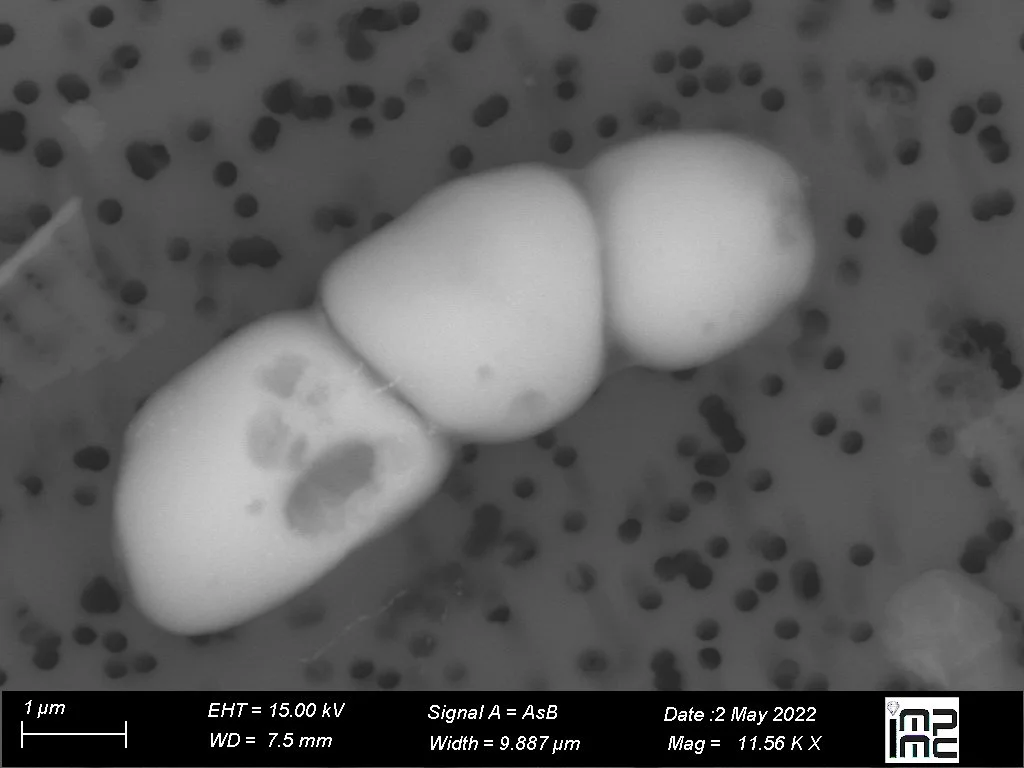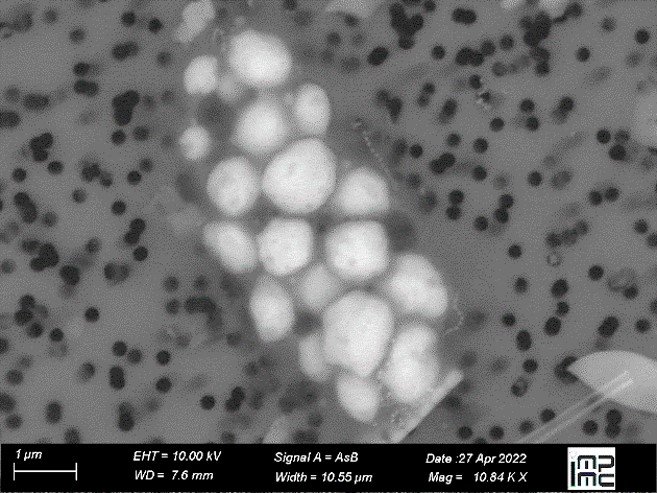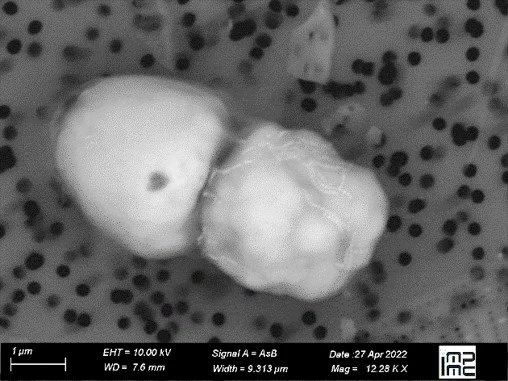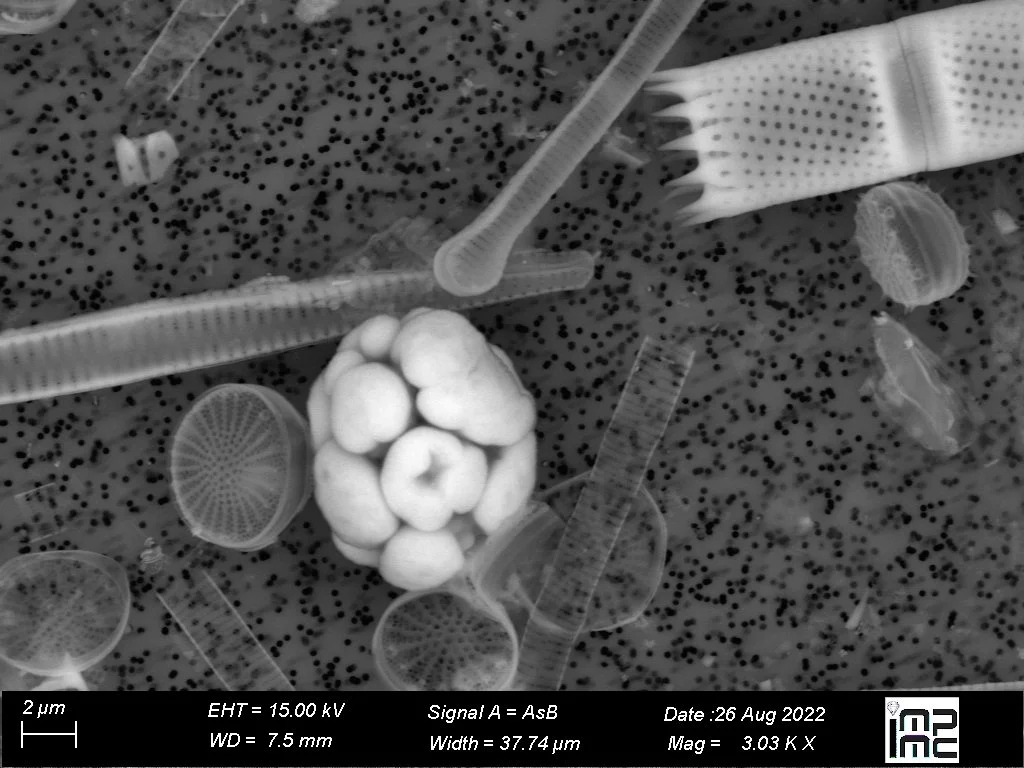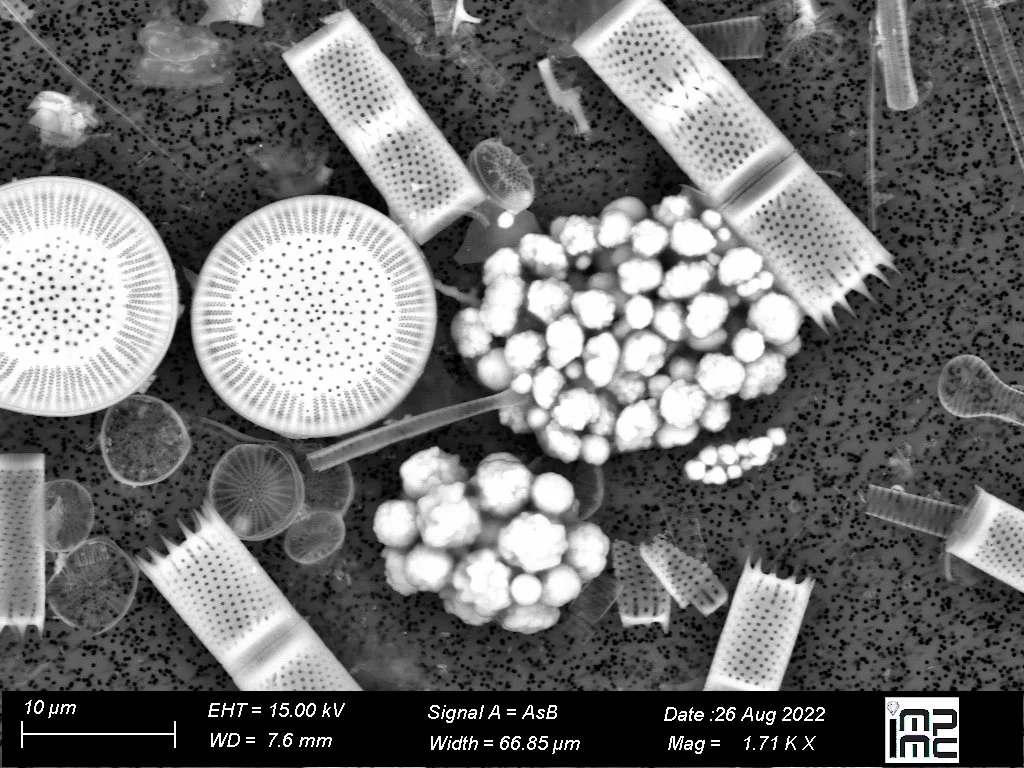Magnetotactic bacteria (MTB) in Lake Pavin
Magnetotactic bacteria (MTB) refers to a unique group of morphologically, phylogenetically, and physiologically diverse microorganisms thriving mostly at oxic–anoxic boundaries of aquatic habitats. Recent field studies in Lake Pavin led to discovery of MTB that were shown to form intracellular amorphous calcium carbonate (ACC). Below is an electron microscopy image of ACC forming MTB, where ACC inclusions are identified as white granules.
The detection of iACC forming capability in MTB found in Lake Pavin expands the repertoire of ACC formation in prokaryotes, and suggests that ACC formation could be a more ubiquitous and diversified process in chemically stratified aquatic environments than previously thought. An overarching goal of this work is to understand the genetic and environmental determinants of intracellular carbonate formation in MTB. My current project in this context aims to understand the factors that control the abundance and population structure of ACC-forming MTB in Lake Pavin sediments. To address this objective I combine fine scale mineralogical and geochemical measurements with high-resolution microscopy and spectroscopy techniques. Some examples of the different type of ACC forming MTB and non-magnetic ACC forming bacteria found in Lake Pavin sediments are shown below.
Image credits: Neha Mehta
